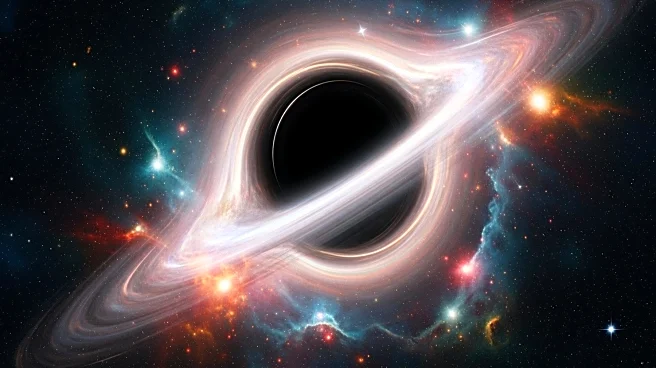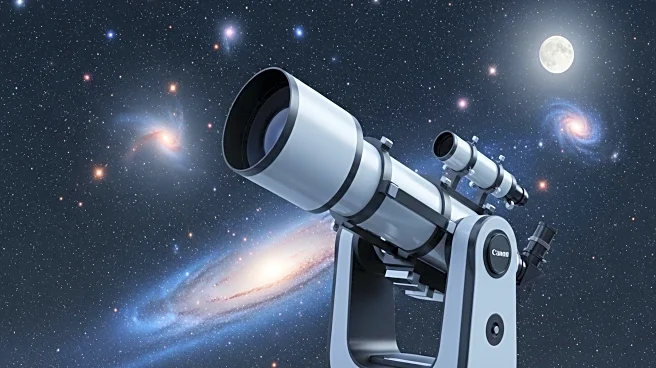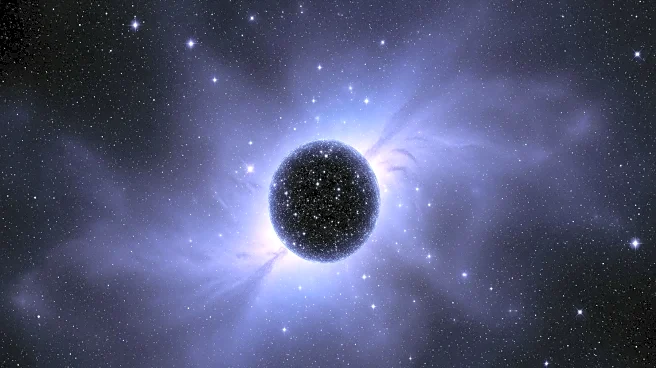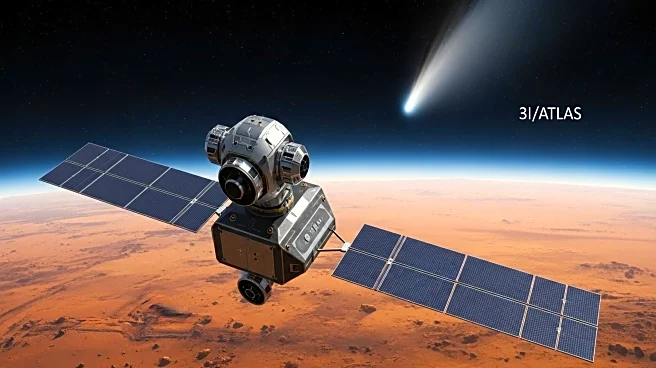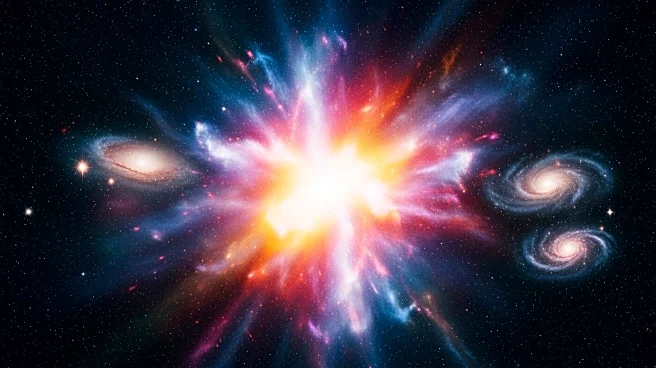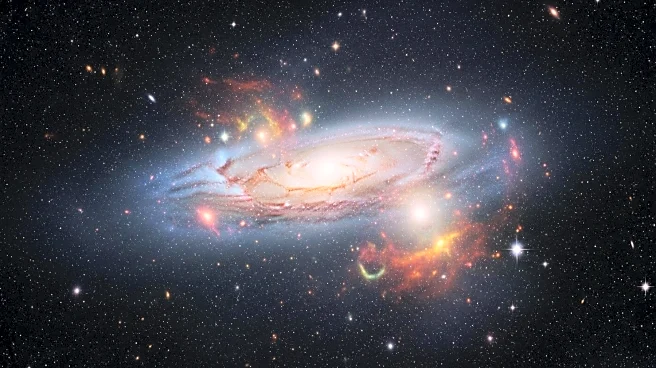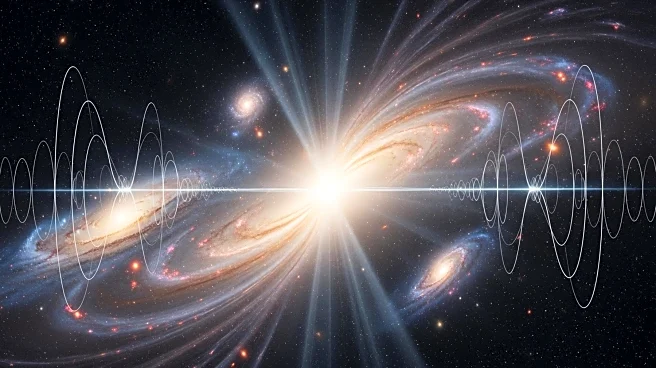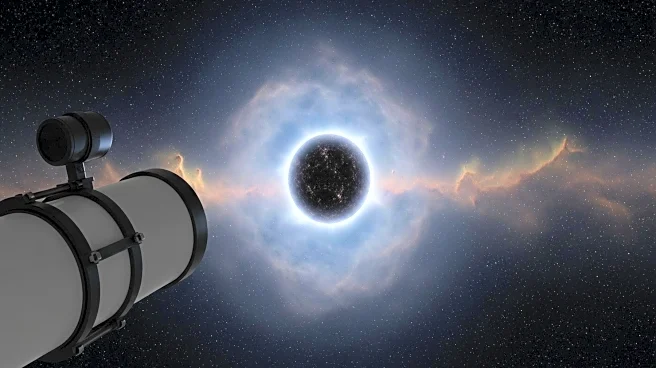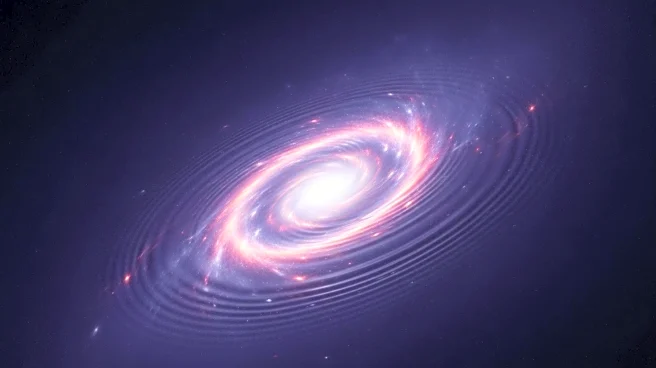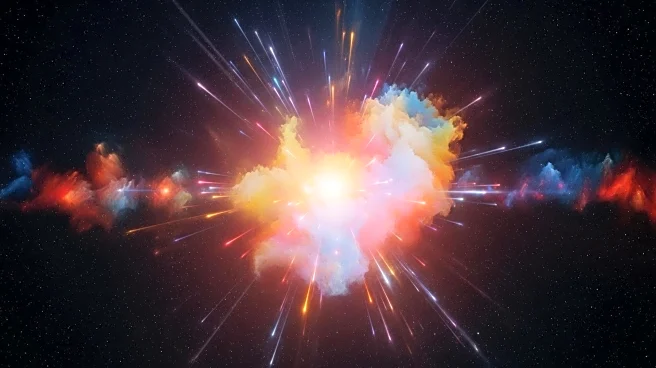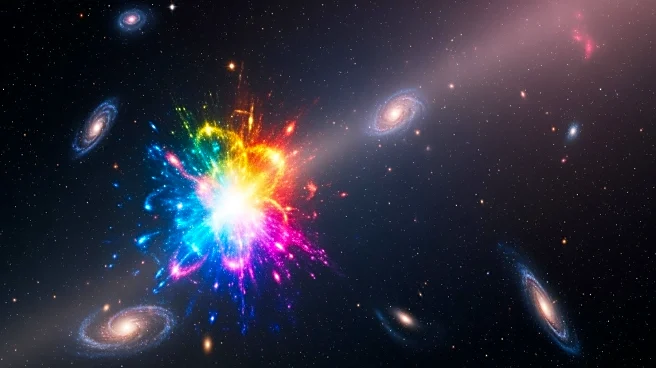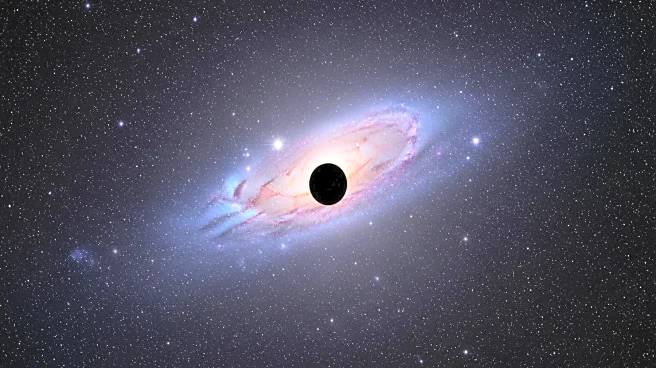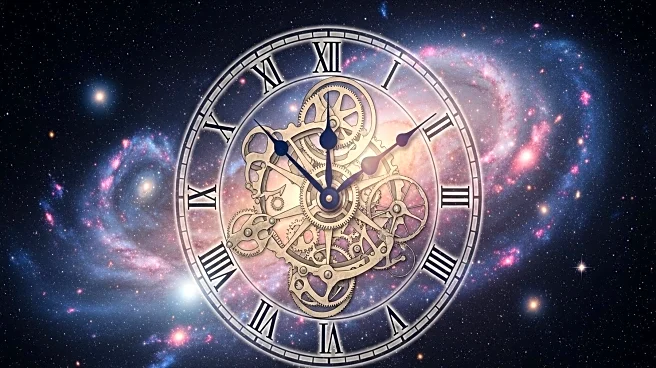What is the story about?
What's Happening?
Physicists Hoang Nhan Luu, Yu-Cheng Qiu, and Henry Tye have proposed a model suggesting that the universe may not expand indefinitely but could eventually collapse in a 'Big Crunch' in about 20 billion years. This theory challenges the long-held belief that the universe will continue expanding forever. The model is based on evolving data about dark energy and the cosmological constant, which was originally thought to be positive, driving eternal expansion. However, new calculations suggest a small negative cosmological constant, indicating a potential inward pull that could reverse expansion. The model also incorporates axions, hypothetical ultra-light particles that may form a smooth field throughout space, influencing cosmic dynamics. According to the study, the axion field initially provided an outward force during the universe's expansion phase, but this force is slowing, potentially allowing the negative cosmological constant to dominate in about 11 billion years.
Why It's Important?
The proposed model has significant implications for our understanding of the universe's fate and challenges the prevailing view of perpetual expansion. If the cosmological constant is indeed negative, it could lead to a cosmic reversal, affecting theories about the universe's lifespan and the nature of dark energy. This research could reshape cosmological models and influence future studies in particle physics and astrophysics. The potential for a 'Big Crunch' scenario raises philosophical questions about the universe's beginning and end, impacting scientific and existential perspectives. The findings underscore the need for further data analysis to confirm whether dark energy is evolving, which could alter fundamental assumptions about cosmic behavior.
What's Next?
Further observations and theoretical refinements are necessary to determine if the proposed model accurately reflects the universe's trajectory. Researchers will need to conduct more data-crunching to ascertain whether dark energy is indeed changing over time. The scientific community may explore additional models and gather more evidence to validate or refute the possibility of a negative cosmological constant. This ongoing research could lead to new insights into the universe's dynamics and the role of axions in cosmic behavior.
Beyond the Headlines
The model's implications extend beyond scientific inquiry, touching on philosophical and existential questions about the universe's ultimate fate. It challenges the notion of an infinite universe and prompts reconsideration of cosmic beginnings and endings. The potential for a 'Big Crunch' scenario invites broader discussions about the nature of existence and the universe's lifecycle, influencing both scientific and cultural narratives.
AI Generated Content
Do you find this article useful?
